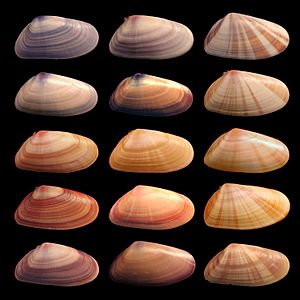Phenotype facts for kids

The phenotype is all the features and characteristics of an organism. Think of it as everything that makes an organism unique and visible, or that can be discovered about it.
This includes things you can see, like eye color or height. But it also includes things you can't see just by looking, like your blood group or how well your body fights off sickness. These hidden traits are still part of your phenotype.
The idea of phenotype was first explained by Wilhelm Johannsen in 1911. He wanted to show the difference between an organism's heredity (the genes it gets from its parents) and what those genes actually produce in the organism.
Contents
What is the Phenotype?
The phenotype is very important because it's what natural selection "sees." Natural selection is the process where organisms that are better suited to their environment tend to survive and have more offspring.
As scientist Ernst Mayr said, the phenotype is the part of an individual that selection can act on. It's how an organism looks and acts that helps it survive or not.
How Genes and Environment Shape Phenotypes
Phenotypes are mostly decided by an organism's genes. However, they are also affected by the environment around them. This means that knowing an organism's genes doesn't always tell you exactly what its phenotype will be.
For example, two people might have genes for being tall. But if one doesn't get enough food when they are young, they might not grow as tall as the other person.
The way genes and the environment work together can be shown like this:
- genes + environment → phenotype
This means your genes give you a starting point, but your experiences and surroundings also play a big part in how you turn out.
The Extended Phenotype
The idea of the extended phenotype was developed by Richard Dawkins. It means that a gene's effects can go beyond just the body of the organism carrying it. These effects can influence the environment or even other organisms.
For instance, a beaver dam is a great example. The dam isn't part of the beaver's body, but it's built because of the beaver's genes. So, the dam can be seen as an extended phenotype of the beaver's genes. It's like the genes are reaching out and changing the world around them.
Another example is when one animal's genes make it affect the behavior of another animal. A cuckoo bird, for example, lays its eggs in other birds' nests. The cuckoo's genes make the parent birds of a different species feed and care for the cuckoo chick. This behavior by the other birds is an extended phenotype of the cuckoo's genes.
Related pages
Images for kids
-
Biston betularia morpha typica, the standard light-colored peppered moth
See also
 In Spanish: Fenotipo para niños
In Spanish: Fenotipo para niños




